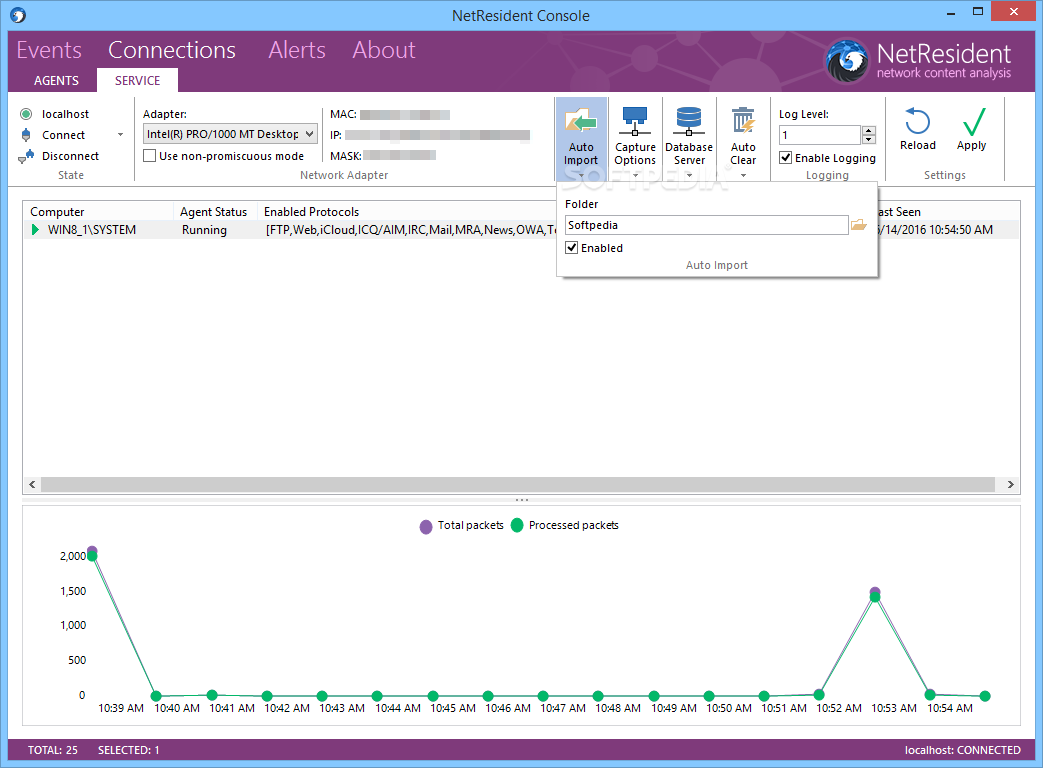

For example if we set a download limit of 20KB/s to Firefox and activate the 'Apply limits.' option then every single connection of the dozens Firefox makes will be limited to 20KB/s, but in total Firefox will be able to donwload at a much higher rate. When 'Apply limits for each connection separately' is activated then the limits are applied per connection.The Custom priority is a useful feature for developers to simulate unstable and limited networks, similar to low quality wireless and satellite signals.
 Ignored processes work without any management from NetBalancer. Usually this increases latency, and by a lesser factor decreases download/upload rates.
Ignored processes work without any management from NetBalancer. Usually this increases latency, and by a lesser factor decreases download/upload rates. 
When a process has a Delayed priority then all its network packets are delayed with the set delay, in milliseconds. Blocked is the same as Drooped with 100% Drop Rate, but works faster and requires less CPU. For example if the drop rate is 40% then out of 100 network packets of a process about 40 of them will not reach their destination. Dropped priorities, with a set Drop Rate, means that a part of their traffic will be dropped. A Limited process will be just limited when it reaches the maximum allowed bandwidth, otherwise it will work as usual. Limited, Ignored, Dropped and Delayed processes are excluded when calculating bandwidth of High, Normal or Low priority processes. When there are no other processes with a higher priority using the network then processes with Low priorities will get all the bandwidth available. Processes with a High priority will get more bandwidth than those with Normal or Low.







 0 kommentar(er)
0 kommentar(er)
